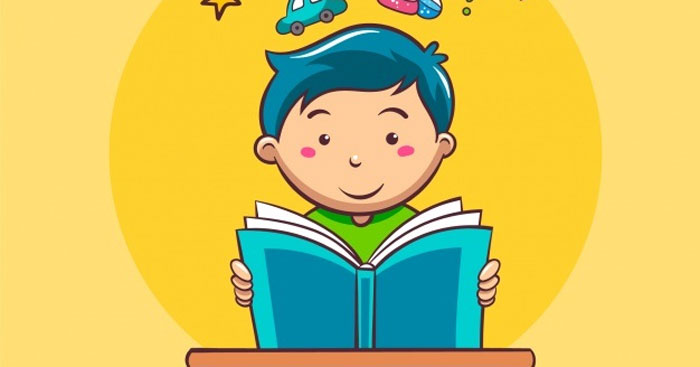Bộ đề thi giữa học kì 1 môn tiếng Anh lớp 11 năm 2020 – 2021, Mời các em học sinh lớp 11 cùng tham khảo Bộ đề thi giữa học kì I môn tiếng Anh lớp 11 năm 2020- 2021
Mời quý thầy cô cùng các bạn học sinh lớp 10 tham khảo tài liệu Bộ đề thi giữa học kì 1 môn tiếng Anh lớp 11 năm 2020 – 2021.
Đây là tài liệu cực kì hữu ích đối với các em lớp 11 đang ôn thi giữa học kì 1. Tài liệu bao gồm 2 đề thi giúp các em nâng cao kiến thức môn tiếng Anh làm quen với các dạng câu hỏi từ đó đưa ra phương pháp ôn thi có hiệu quả. Chúc các em học sinh đạt kết quả cao trong kì thi giữa kì I lớp 11. Nội dung chi tiết mời bạn đọc tham khảo và tải tài liệu tại đây.
Đề thi giữa học kì I môn tiếng Anh lớp 11
|
SỞ GD& ĐT … TRƯỜNG THPT ………….. |
ĐỀ KIỂM TRA CHẤT LƯỢNG GIỮA HỌC KỲ I NĂM HỌC: 2020-2021 MÔN: TIẾNG ANH – LỚP 11 THỜI GIAN: 60 phút |
Choose the one word or phrase -A, B, C, or D- that best completes the sentences.
Question 1: Children who are isolated and lonely seem to have poor language and ________.
A. communication
B. communicate
C. communicator
D. communicative
Question 2: We are a very _____________ family. All of us have very close relationship with one another.
A. typical
B. friendly
C. strange
D. close-knit
Question 3: Jack and Peter are talking about the weather.
– Jack: “What is the weather like today.” – Peter: “____________”
A. I like the weather cool.
B. Don’t mention it.
C. I don’t like it.
D. It is very hot.
Question 4: We _______ Dorothy since last Saturday.
A. haven’t seen
B. didn’t see
C. don’t see
D. hadn’t seen
Question 5: Many young people have objected to ____ marriage, which is decided by the parents of the bride and groom.
A. agreed
B. sacrificed
C. contractual
D. shared
Question 6: Two friends Mai and Nam are talking about Nam’s new cell phone.
– Mai: “Wow, I’ve never seen such a nice cell phone, Nam.”
– Nam: “______”
A. Oh, I don’t know.
B. You’re welcome.
C. I agree with you.
D. Thank you. I’m glad you like it.
Question 7: The train ______ half an hour ago.
A. had left
B. has left
C. left
D. has been leaving
Question 8: He asked the children _________too much noise.
A. don’t make
B. not making
C. if they don’t make
D. not to make
Question 9: The lecturer explained the problem very clearly and is always _______ in response to questions.
A. attentive
B. attentively
C. attentiveness
D. attention
Mark the letter A, B, C, or D on your answer sheet to indicate the word that differs from the other three in the position of primary stress in each of the following questions.
Question 10:
A. attract
B. working
C. couple
D. reader
Question 11:
A. romantic
B. assistance
C. family
D. attention
Mark the letter A, B, C, or D on your answer sheet to indicate the word whose underlined part differs from the other three in pronunciation in each of the following questions.
Question 12:
A. stopped
B. photographed
C. walked
D. conducted
Question 13:
A. plays
B. dates
C. studies
D. concerns
Mark the letter A, B, C, or D on your answer sheet to indicate the sentence that best combines each pair of sentences in the following questions.
Question 14: They finished their homework and then they went to bed .
A. After they had finished their homework , they went to bed .
B. Before they finished their homework , they went to bed .
C. While they finished their homework , they went to bed .
D. Because they finished their homework , they had gone to bed .
Question 15: She helped me with the homework . I thanked her a lot.
A. I thanked her a lot with helping me with the homework.
B. I thanked her a lot for helping me with the homework.
C. I thanked her a lot for helped me with the homework.
D. I thanked her a lot for help me with the homework.
Choose the word or phrase with the CLOSEST meaning as the underlined part.
Question 16: I knocked on the window to get her attention.
A. give
B. pay
C. take
D. attract
Question 17: Teachers can’t give students any assistance in exams.
A. attention
B. attraction
C. help
D. nod
Mark the letter A, B, C, or D on your answer sheet to indicate the word(s) OPPOSITE in meaning to the underlined word(s) in each of the following questions.
Question 18: She’s very efficient and caring. I think she would make a good nurse.
A. obedient
B. confident
C. supportive
D. selfish
Question 19: Our teacher often said, “Who knows the answer? Raise your hand.”’
A. Go out
B. Put your hand up
C. Put your hand down
D. Come in
Mark the letter A, B, C, or D on your answer sheet to indicate the sentence that is closest in meaning to each of the following questions.
Question 20: “ Are you a student now ?” I asked him.
A. I asked him if he is a student then.
B. I asked him if he was a student then.
C. I asked him if was he was a student then?
D. I asked him if he were a student then.
Question 21: ”Where did you go last night”? she said to her boyfriend.
A. She asked her boyfriend where had he gone the night before.
B. She asked her boyfriend where did he go last night.
C. She asked her boyfriend where he had gone the night before.
D. She asked her boyfriend where he went the night before.
Question 22: Lisa started to learn Spanish two years ago.
A. Lisa hasn’t learned Spanish two years before.
B. Lisa has learned Spanish for two years.
C. Lisa has learned Spanish since two years.
D. Lisa didn’t learn Spanish two years ago.
Mark the letter A, B, C, or D on your answer sheet to indicate the underlined part that needs correction in each of the following questions.
Question 23: My mother always get up early to prepare breakfast for everyone in the family.
A. everyone
B. family
C. get up
D. to prepare
Question 24: Before she watched TV, she did her homework.
A. her
B. watched
C. did
D. Before
Question 25: They asked me what did happen last night, but I was unable to tell them.
A. asked
B. to tell
C. but
D. did happen
Read the following passage and mark the letter A, B, C or D on your answer sheet indicate the correct answer to each of the following questions from 26 to 30
WEDDING CUSTOMS
In many countries, it is customary for the bride to wear a white dress as a symbol of purity. In traditional Japanese wedding ceremonies, the bride wears a white kimono. The tradition of wearing a special white dress only for the wedding ceremony started around 150 years ago. Before that, most women could not afford to buy a dress that they would only wear once.
In different countries, colors other than white are worn by the bride or used as part of the wedding ceremony. In certain Asian countries and in the Middle East, red and orange are considered symbols of joy and happiness. In Chinese cultures, wedding invitations are usually red and gold as these are colors symbolic of wealth and happiness. Wedding guests give gifts of money to the newlyweds in small red envelopes. Not all cultures, though, consider money a suitable gift. In many Western countries, especially the U.K, wedding guests give the bride and groom household items that they may need for their new home.
In many cultures, couples exchange rings, usually made of gold or silver, during the marriage ceremony. The circular shape of the ring is symbolic of the couple’s eternal union. In Brazil, it is traditional to have the rings engraved, with the bride’s name on the groom’s ring, and vice versa.
Many wedding customs that originated in one part of the world have been incorporated into marriage ceremonies in other countries. Today, couples can choose from many of the world’s traditional customs to create their own special ceremony.
Question 26: The main idea of the passage is about _________ .
A. what people usually do in wedding ceremony in U.K
B. what people usually do in wedding ceremony in Japan
C. what people usually do in wedding ceremony in Brazil
D. what people usually do in wedding ceremony in the world
Question 27: In some Asian and Middle Eastern countries, which color is NOT traditionally part of a wedding ceremony?
A. White
B. Blue
C. Orange
D. Red
Question 28: The tradition of wearing a special dress only on one’s wedding day is about years old.
A. 150
B. 15,000
C. 15
D. 1,500
Question 29: Why, in some cultures, does the bride wear a white dress?
A. Because it is a traditional symbol of purity.
B. Because she wants to be innocent.
C. Because it is a traditional symbol of secrecy.
D. Because she likes modesty.
Question 30: Which statement is TRUE?
A. In the U.K it is customary to write the bride and groom’s names in the wedding rings.
B. In Chinese cultures, red and gold are symbolic of wealth and happiness.
C. In Brazil the wedding guests give the bride and groom money.
D. In Japan, the bride and groom often receive household items from their guests.
Make the letter A, B, C, or D on your answer sheet to indicate the correct word for each of the blanks from 31 to 35
In the past, (31)_____ men and women were expected (32)_____ at quite young ages. Marriages were generally arranged by parents and family, with their children having little chance to say no in the matter. In the past it was not surprising to find that a bride and groom had only just (33)_____ on the day of their engagement or marriage.
In modern Vietnam, this has changed completely as people choose their own marriage-partners based (34)_____ love, and in (35)_____ primarily to their own needs and wants. Moreover early marriage is quite illegal.
Question 31:
A. although
B. As
C. both
D. because of
Question 32:
A. Marry
B. to be married
C. to marry
D. being married
Question 33:
A. meeting
B. meet
C. met
D. to be met
Question 34:
A. at
B. with
C. in
D. on
Question 35:
A. Consideration
B. consider
C. considertive
D. Considerly
Read the following passage and mark the letter A, B, C or D on your answer sheet indicate the correct answer to each of the following questions from 36 to 40
If parents bring up a child with the aim of turning the child into a genius, they will cause great damage to him. According to several leading educational psychologists, this is one of the biggest mistakes which some parents make. Generally, the child will understand very well what the parents expect, and will fail. Unrealistic parental expectations can cause great damage to the children.
However, if parents are not unrealistic about what they expect their children to do, but are hopeful in a sensible way, the child may succeed in doing very well especially if the parents are very supportive of their children.
Michael Smiths is very lucky. He is very fond of music, and his parents help him a lot by taking him to concerts and arranging private piano and violin lessons. Although Michael’s father plays the trumpet in a large orchestra, he never makes Michael enter music competitions if the is unwilling.
Michael’s friend, Winston Maier, however, is not so lucky. As both his parents are successful musicians, they set too high a standard for Winston. They want their son to be as successful as they are, and so they enter him in every piano competition held. They are very unhappy when he does not win. “When I was at your age, I used to win every competition I entered,” Winston’s father tells him. Winston is always afraid that he will disappoint his parents and now he always seems quiet and unhappy.
Question 36: The main idea of the passage is ________.
A. how parents should make a child a musician.
B. how parents should bring up a child
C. what differences there are between two kinds of parents.
D. what aim of a child can be much earlier to each.
Question 37: Michael is lucky because________.
A. his parents help him in a sensible way
B. his father is a musician in an orchestra
C. his family is rich enough to have a car
D. he is free to do anything that he likes best
Question 38: Winston’s parents set so high a standard for him that________.
A. he has to do his best to do everything
B. he is afraid that he may disappoint them
C. he has made great progress in music
D. he often wants to kill himself some day
Question 39: It is one of parents’ mistakes if________
A. they don’t care for their child’s education much
B. they want their child to be a musician
C. they help their child to win music competitions
D. they make their child try to achieve too much.
Question 40: According to the author’s opinion, ________.
A. parents should be supportive of their children.
B. unrealistic parents should arrange private lessons for their children
C. all sensible parents can train their children to succeed in everything.
D. it is unimportant to let the child develop in the way they want.
………..
Tải file tài liệu để xem thêm nội dung chi tiết











